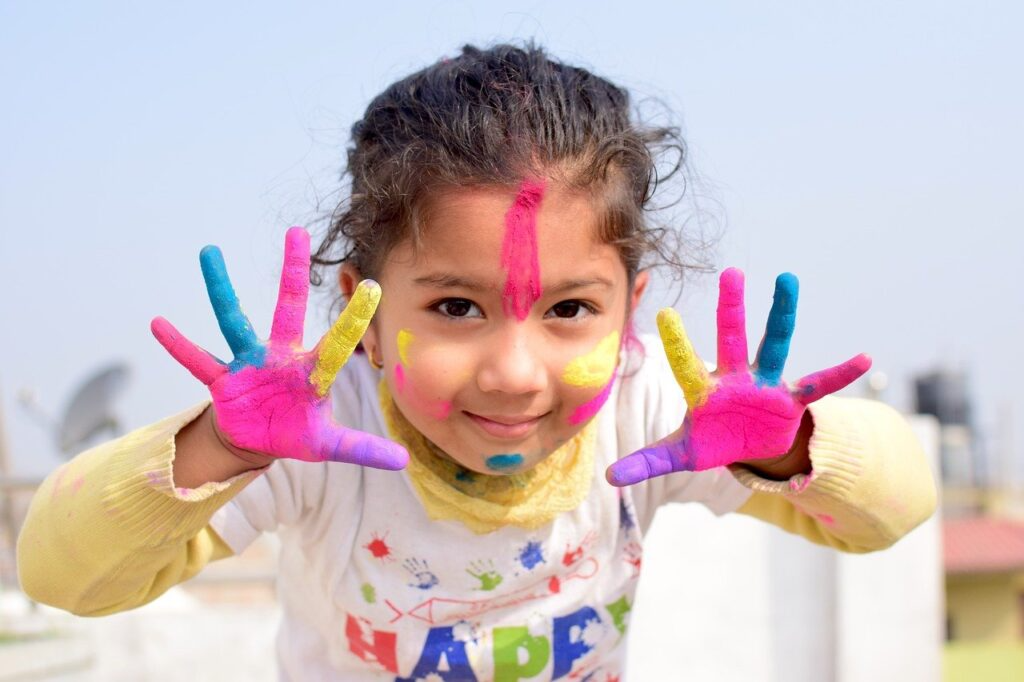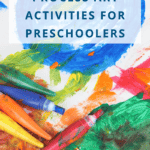Process Art Activities for Preschoolers: Fostering a Creative Journey
Ever watched young children get fascinated with a streak of color they made on a piece of paper or with their fingers squishing through a pile of mud? If you have, then you’ve witnessed the purest form of process art. But what exactly is it?
Play. Learn. Thrive.™ only endorses products we authentically love and use. Some of the product links in this post may be affiliate links. That means that if you click them and make a purchase, this site makes a commission. Play. Learn. Thrive.™ is also an Amazon Associate. As an Amazon Associate, we earn from qualifying purchases. It will have no impact on the price you pay or the experience of your purchase.
Remember the story of the Pied Piper leading children with just the sound of his music? Process art is the Pied Piper of the art world. Process art projects don't focus on the destination but cherish the journey. The emphasis is not on the final product art but on the experience of creation and exploring different materials. Let's dive deeper into this enchanting world and explore process art activities for preschoolers.

What is Process Art?
Imagine you're baking cookies with your messy little monster. If you fixate only on getting the cookies “just right,” it can quickly become a stressful experience. But if you savor every moment—rolling the dough, feeling its texture, and laughing over misshapen ones—you are embracing the actual process of making the cookies. It becomes a sensory activity, and younger children will find it a lot of fun. The finished product will be unique and not so “cookie cutter” (pun intended).
Sensory process art is akin to the memory of baking those cookies. It is about cherishing the moment of creation, the exploration, and the joy of experimentation. It's less about “Look at what I made!” and more about “Look at what I did!”
One of the nice things about process art is that it promotes critical thinking without attached a required skill level, which makes it inviting for young kids and older children alike. Read on for some of our favorite easy process art ideas that will provide different ways for your kiddos to explore the creative process, experiment with a variety of art materials, and spark a love of art.
Simple Process Art Activities for Preschoolers
1. Color Exploration: Lay out a palette of colors, paint brushes, sponges, and other art supplies and let your child explore color, form, and texture. The end result doesn't need to be a recognizable still life or landscape; it could very well be a whirlwind of colors and shapes, each with its own story. It's about having as much fun as possible with no pressure or expectations attached.
2. Found Items Collage: Inspired by Thoreau's days at Walden Pond, take your child outside. Gather leaves, twigs, flowers, and stones. Once back, spread a big sheet of paper and let them create art using their nature collectibles. Or keep them outside and let them make their best mud pies. Mud kitchens can come in handy for this activity!
3. Sensory Squish Bags: This one's a tactile delight and a great introduction to sensory play! Fill ziplock bags with paint, glitter, and beads. Seal them up, lay them out, and watch as your preschooler squishes and swirls, creating ever-changing patterns.
4. Footprint Stories: Paint your child's feet with washable paint and let them walk over a large canvas. My girls found a great alternative using sidewalk chalk dust and water, instead of paint. It’s less permanent and much easier to clean up.
5. Bubble Wrap Stomping Party: Recall the satisfaction of popping bubble wrap? Pour paint onto large pieces of bubble wrap, and let your preschoolers walk, jump, and dance on it. When they lift their feet, they'll see the beautiful imprints left behind. It’s not just an art activity; it's also a delightful sensory experience.
6. Toy Car Paint Race: Think of this as the *Fast and the Furious* for the toddler world. Dip the wheels of toy cars in paint and let them ‘race' across the canvas. The patterns, zigzags, and curves created can tell a story of their own.
7. Salt and Watercolor: Ever been mesmerized by the ethereal patterns of frost on a window? Recreate this wonder. Have your child sprinkle salt on a wet watercolor painting and watch in awe as the salt absorbs the paint, creating frost-like patterns.
8. Nature Brush Painting: Imagine Van Gogh painting with twigs and feathers instead of brushes. For this, replace regular brushes with twigs, leaves, and feathers. Each ‘brush' creates a unique texture, making your child reflect on the versatility of nature.
9. Clay Exploration: Taking inspiration from the likes of Rodin, provide clay to your preschooler without an end product in mind. Let them squeeze, roll, poke, and explore. Maybe they'll create a mini ‘Thinker,' or perhaps they'll craft an abstract piece that’s pure emotion.
10. Shaving Cream Marbling: This one’s as close to wizardry as art can get! Fill a tray with shaving cream, drop different colored paints on top, and let your child swirl patterns using a popsicle stick. Place a paper on top, remove, and scrape off the excess cream. The marbled patterns left behind are nothing short of magical.
11. Ice Paint Cubes: Inspired by the chilly charm of *Frozen* freeze paint mixed with a little water in ice cube trays. Once frozen, pop them out and let your preschooler paint as the cubes melt on paper. It's a delightful combination of science and art.
12. Collage Dream Boards: Remember the charm of old-school scrapbooking? Give your child old magazines, newspapers, ribbons, and more. Let them cut, rip, and glue to their heart’s content, creating a collage that might tell a story or simply be an explosion of textures and colors.
These are just a few fun process art ideas. Remember, there's no wrong way, so come up with other creative ways to explore using a variety of materials and new tools.
Why is Process Art Important for Preschoolers?
In a world dominated by Pinterest-perfect crafts and Instagram-worthy art projects, why should we steer our little ones towards process art?
1. Fosters Creativity: Preschoolers are natural explorers. Allowing them to experiment without a fixed end-goal fuels their imagination.
2. Boosts Confidence: There's no “right” or “wrong” in process art. It's all about the individual journey, which can be immensely reassuring for young minds.
3. Enhances Motor Skills: Think of the delicate grip required to hold a brush, or the hand-eye coordination involved in swirling paint.
Conclusion: The Journey is the Destination
In the words of the renowned sculptor, Henry Moore, “Art is the expression of imagination, not the reproduction of reality.” For our young ones, let's celebrate the process, the imagination, the journey. As they grow, they'll have ample opportunities to stress about the destination. But for now, let them revel in the joy of creation.
Because at the end of the day, isn't that what life's all about? Embracing the journey.

